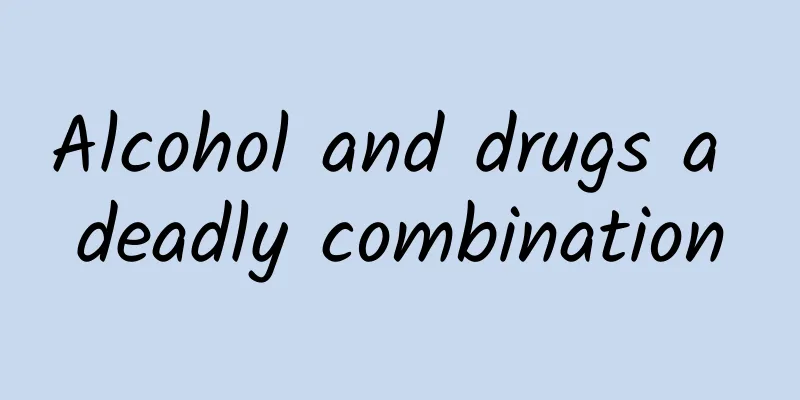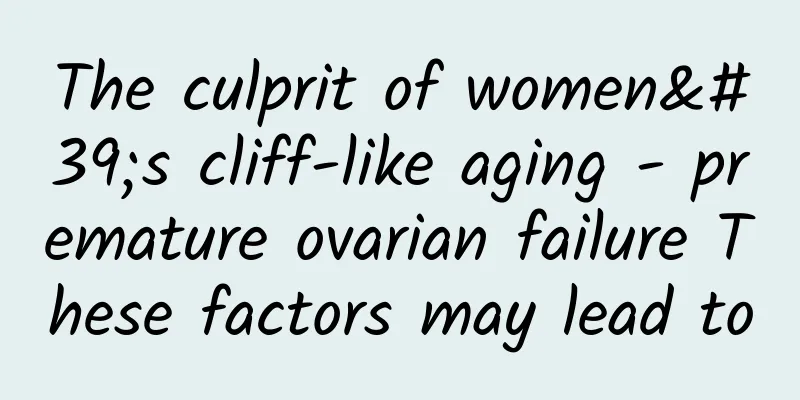Alcohol and drugs a deadly combination

|
During festivals, it is inevitable that friends and family will drink a few glasses of wine when they get together. At dinners or parties, people often joke when they raise their glasses to persuade others to drink: "Cephalexin and alcohol, just go away." This seemingly exaggerated joke hides real medical risks. The interaction between drugs and alcohol can reduce the efficacy of drugs at the least, or cause poisoning or even death at the worst. Today, we will uncover the scientific principles behind this. 1. How does alcohol affect drug metabolism? The liver is the main organ for the body to metabolize drugs, and the metabolism of alcohol also relies on the enzyme system in the liver. When alcohol and drugs enter the body at the same time, the two will compete for metabolic resources, leading to two results: 1. Delayed drug metabolism : Alcohol inhibits liver metabolic enzymes (such as CYP450 enzyme system), and the drug cannot be broken down in time, accumulating in the body and causing poisoning; 2. Abnormal alcohol metabolism : Certain drugs (such as cephalosporin antibiotics) can block the decomposition of alcohol, leading to the accumulation of the toxic intermediate acetaldehyde and triggering a violent reaction. 2. These drugs and alcohol are incompatible 1. Cephalosporin antibiotics : the most dangerous " disulfiram-like reaction " Typical drugs: cefoperazone, ceftriaxone, metronidazole, tinidazole, etc. Consequences: Even drinking a small amount of alcohol may cause facial flushing, headache, nausea and vomiting, palpitations, and in severe cases, difficulty breathing, shock, and even death. Scientific explanation: The drug inhibits acetaldehyde dehydrogenase, and the accumulation of acetaldehyde triggers toxic reactions, which is the same principle as the alcohol abstinence drug "disulfiram". 2. Antipyretic analgesics : gastric bleeding and liver damage risk Typical drugs: aspirin, ibuprofen, acetaminophen (paracetamol). Consequences: Alcohol dilates the blood vessels in the gastric mucosa and synergistically stimulates the stomach wall with drugs, increasing the risk of gastric ulcers and gastric bleeding; toxic substances produced during the metabolism of acetaminophen can lead to acute liver necrosis. 3. Antihypertensive and hypoglycemic drugs: hidden dangers of losing control of efficacy Antihypertensive drugs (such as nifedipine): Alcohol dilates blood vessels, and the synergistic effect may cause a sudden drop in blood pressure and trigger fainting. Antidiabetic drugs (such as metformin, insulin): Alcohol inhibits hepatic gluconeogenesis and increases the risk of hypoglycemic coma. 4. Sedatives and sleeping pills: the deadly trap of respiratory depression Typical drugs: diazepam (Valium), estazolam, zopiclone. Consequences: Alcohol enhances the drug's inhibitory effect on the central nervous system, causing drowsiness, coma, respiratory arrest, and a very high mortality rate. 5. Antidepressants: emotional and physiological dangers Typical drugs: sertraline, fluoxetine, monoamine oxidase inhibitors (MAOIs). Consequences: Alcohol exacerbates the drug's interference with the nervous system, which may induce mania, epileptic seizures, and even hypertensive crisis. 3. “ Hidden Alcohol ” That’s Easily Ignored In addition to liquor, beer, and wine, the following situations may also cause risks: Foods containing alcohol: chocolate with alcohol filling, fermented bean curd, drunken shrimp/crab; Drugs containing ethanol: Huoxiang Zhengqi water, Shidi Shui, compound licorice oral liquid; External disinfectant alcohol: may be absorbed through the skin after large amounts of skin rub (but the risk is low). 4. The “ Time Rule ” for Safe Medication Use 1. How long after drinking can I take medicine? Beer/red wine: at least 6 hours apart; Strong liquor: at least 24 hours apart. 2. How long after stopping medication can I drink alcohol? Cephalosporin antibiotics: Do not drink alcohol within 7 days after stopping medication; Sedatives: more than 3 days after discontinuation of medication. 5. Emergency treatment of accidental drinking 1. Stop drinking immediately and drink plenty of water to promote excretion; 2. If you experience symptoms such as flushed face and palpitations, lie flat and keep your breathing unobstructed; 3. If you experience confusion or difficulty breathing, call emergency services immediately and tell your doctor what medications you are taking. 6. Three iron laws of scientific medication 1. Read the instructions before taking the medicine: pay special attention to the "contraindications" and "drug interactions" sections; 2. Actively inform doctors of drinking habits: patients with chronic diseases need to have their liver and kidney function evaluated; 3. Refuse to rely on luck: Even "a small drink" may cost you dearly. Conclusion The interaction between drugs and alcohol is essentially a "war" of chemicals in the human body. Every time you take the risk of drinking, it may turn treatment into harm. Remember: health is no small matter, please say "no" to alcohol while taking medication! Author: Li Yao, Chief Pharmacist, Nansha Branch of Guangzhou First People's Hospital |
>>: Breast hyperplasia: Is it still necessary to be vigilant if it is benign?
Recommend
Normal picture of cesarean section wound
Everyone knows that the uterus is the organ that ...
How to treat breast dysplasia
The growth and development of breasts will not be...
What brand is Zhang Xiaofei's sweater? How much is the same sweater Zhang Xiaofei wore in the 2020 CCTV Spring Festival Gala?
In the 2020 CCTV Spring Festival Gala, many fairi...
Self-correction techniques for inverted nipples
People aged 18 and above with congenital or acqui...
Don’t be careless if you have frequent dizziness! Learn the causes and solutions
Dizziness is a common symptom that many people ex...
Why do I have severe stomach pain on the first day of my period?
Abdominal pain on the first day of menstruation i...
How many durians can you eat in a day? How to choose the durian that tastes good?
Durian pulp also contains sugar, vitamins, and mi...
What is the pregnancy preparation encyclopedia
With the rapid development of the economy, people...
What is the secret to making fish-flavored pork shreds? What should you pay attention to when making fish-flavored pork shreds?
Food is a lifestyle that every household likes to...
Can pregnant women take ve capsules?
Vitamin E soft capsule is a medicine used to trea...
How long does it take to do a Down syndrome screening test?
Down syndrome screening is an examination that mo...
What should I wear in Tibet in summer? How often do pilgrims kneel?
If you travel to Tibet, you must not miss the Pot...
Are you worried about your blood pressure soaring when you go out for fun or eat out? Here are the things that patients with hypertension should pay attention to.
During the National Day holiday, friends and fami...
Factors affecting the recovery period of double eyelid surgery
In our daily life, we will find that people have ...









